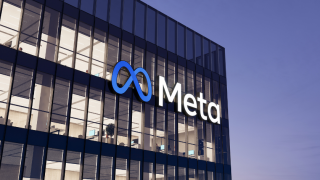However, the market is changing fast. Route diversification is an important topic, with Saudi Arabia and Israel actively developing alternative routes through the region, and the Middle East’s growing demand for bandwidth to serve the content, enterprise and data centre spaces means cable builders need to plan how to better serve the Middle East rather than just how to get through it.
Here are eight important upcoming submarine cable projects in the Middle East and what they mean for the region’s digital economy.
Saudi Vision
Length: 1,071 km
Estimated completion: 2023
Saudi Vision is a domestic cable connecting the Saudi port city of Jeddah and Haql on the Jordanian border, with spurs to Duba and Yanbu. Built by STC, the cable connects the carrier’s international landing stations in each of these four Red Sea cities and provides vital improvements to domestic capacity and connectivity.
After landing in Jeddah in August 2022, the cable is expected to finish at the end of 2023, when it will provide 16 fibre pairs at 18 Tbps per pair.
Blue
Length: 4,696 km
Estimated completion: 2024
The Blue submarine cable is one of several upcoming projects routed to avoid the pinch point of the Suez Canal – where 15 subsea cables already run or will run and as such represents a severe point of failure.
Build by a Sparkle-Omantel-Google consortium, Blue is one half of the Blue-Raman cable that will eventually link Italy to India via Saudi Arabia, achieving long-desired route diversity in the Middle East’s cable landscape. This western leg of the cable runs from Sparkle’s newly opened Genoa Landing Platform to Tel Aviv in Israel, via various spurs to Cyprus, Crete, Sicily, Sardinia, Corsica, and Rome.
Raman
Length: 7,028 km
Estimated completion: 2024
The eastern leg of the Blue-Raman project, Raman picks up where Blue left off, running from Aqaba in Jordan to India, via Saudi Arabia, Oman, and Djibouti.
Named after Nobel Prize-winning Indian physicist Chandrasekhara Venkata Raman, the cable provides 16 fibreoptic pairs and is one of 18 cables around the world involving Google in their construction.
The two cables together will also host a virtual fibre solution, agreed in June 2023 between consortium member Sparkle and Kush Investments, which will help support digital and connectivity growth in Africa.
Andromeda
Length: TBC
Estimated completion: 2024
Running across the Eastern Mediterranean from Crete to Israel via Cyprus, Andromeda is small geographically but important strategically, creating valuable extra capacity between southern Europe and the Middle East and offering diversification from the Gulf of Suez-Marseille/Italy route.
Africa-1
Length: 10,000 km
Estimated completion: 2024
Kenya’s thriving digital sector is attracting infrastructure investment across various categories, and subsea is one of them. When completed in 2024, the Africa-1 cable will become the 9th cable to land at the port city of Mombasa, running up past the Horn of Africa to split into two spurs – one to Pakistan and the UAE, and another to Marseille via the Gulf of Suez and various landing points along the way. With a length of 10,000km and built by a six-company consortium, Africa-1 delivers 8 fibre pairs across its route with up to 400 Gb/s advanced coherent XWAV line cards, offering important connectivity between three continents.
2Africa
Length: 45,000 km
Estimated completion: 2024
While most of 2Africa is dedicated to circumnavigating the content it is named after, a considerable part of the cable’s length serves various markets in the Middle East too. The longest cable in the world at 45,000km, 2Africa most recently made landfall in the Saudi cities of Jeddah and Yanbu, with further landings expected at Duba and Al Khobar by 2024.
As well as center3 and Meta, who announced the May 2023 landings of the project, other consortium members are stc, China Mobile International, MTN Global Connect, Orange, Telecom Egypt, Vodafone and WIOCC. Its design capacity of 180Tbps will eventually connect 33 countries, running from Ireland all the way to Marseille via South Africa, Port Said and the Persian Gulf.
SeaMeWe 6
Length: 21,700 km
Estimated completion: 2025
Much of the industry attention on SeaMeWe-6, the latest in a series dating back to 1985, focuses on its geopolitical importance in Asia and whether this influence the recent withdrawals of China Telecom and China Mobile from the project. However, the cable also represents an important additional route to and from the Middle East, with its 10-pair, 12.6 Tbps per pair capacity due to stop off at Oman, the UAE, Qatar, Bahrain, and Saudi Arabia on its way from Singapore to Marseille.
Medusa
Length: 8,760 km
Estimated completion: 2025
Route diversification is the talk of the Middle Eastern subsea market, but new projects to and from Europe are still being routed via the Gulf of Suez. One of them is Medusa, an 8,700km project that runs from Lisbon to Port Said, stopping at most Mediterranean countries along the way with the lengthiest spur up to Marseille. Although ultimately owned by AFR-IX, Medusa is run according to Open Access principles to provide a neutral service and will be fully operational by 2026 if all goes to plan.
The first cable between Iberia and the Middle East since 2011’s Europe India Gateway, Medusa includes 4 fibre pairs available as full or half pairs, each with a 20 Tbps capacity.
Route, length, consortium and ready for service (RFS) information for all cables taken from TeleGeography’s Submarine Cable Map
The subsea cable market is a prominent topic on the Capacity Middle East agenda – the event you need to be at to do business in the region. See how to get involved here.






